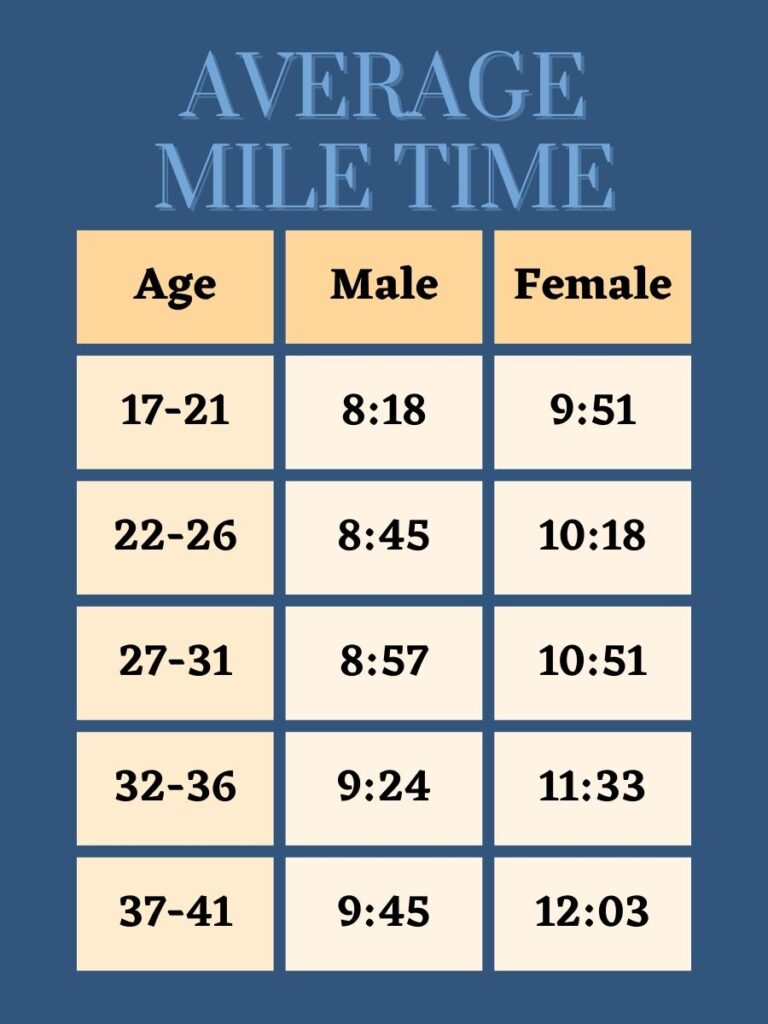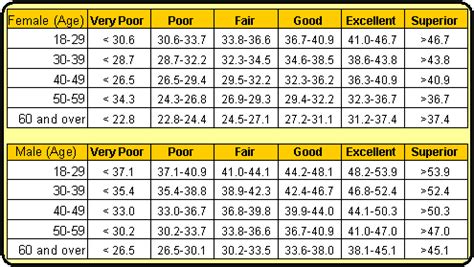What is the Common Running Speed for a Mile?
The average running time for 1 mile varies significantly depending on factors such as age, gender, fitness level, and running conditions. For an average adult in good health, the typical mile time ranges between 7 to 10 minutes. However, it is essential to understand that these estimations serve as a general guideline, and individual results may differ. Highly trained runners can complete a mile in less than 4.5 minutes, while beginners might take over 12 minutes to cover the same distance.
How to Determine Your Personal Mile Running Time?
To accurately measure your own mile running time, follow these steps:
- Select a suitable course: Choose a flat, traffic-free route, preferably a measured course or a track. Ideally, the course should be free of obstacles and distractions to ensure a smooth run.
- Warm-up adequately: Begin with a 10-minute easy jog or brisk walk to prepare your muscles and cardiovascular system for the upcoming effort.
- Start your timer: Use a smartwatch, running app, or a simple stopwatch to record your time. Ensure that you start the timer as you begin your run.
- Maintain a consistent pace: Aim to run at a steady, sustainable effort throughout the mile. Avoid starting too fast, which can lead to a significant slowdown towards the end of the run.
- Record your time: Stop the timer as soon as you complete the mile. Make a note of your time for future reference.
- Repeat and analyze: Repeat the process multiple times to establish a reliable average running time for 1 mile. Compare your times to monitor your progress and identify areas for improvement.
Comparing Mile Running Times Across Age Groups and Genders
While comparing mile running times across age groups and genders can provide a general understanding of performance benchmarks, it is crucial to remember that individual progress should be the primary focus. Nonetheless, examining the averages can offer valuable insights.
- Age Groups: As per general trends, the average running time for 1 mile tends to decrease with age, peaking in the late teens and early twenties before gradually increasing in the later years. This pattern can be attributed to various factors, including physiological changes, increased responsibilities, and decreased activity levels.
- Genders: On average, men typically run a mile faster than women due to physiological differences such as muscle mass, lung capacity, and hormonal variations. However, individual performance can vary significantly, and many women outperform men in this area.
Improving Your Mile Running Time: Expert Tips and Techniques
To enhance your mile running time, consider incorporating the following expert-recommended strategies and techniques:
- Interval Training: Incorporate high-intensity interval training (HIIT) into your routine by alternating between short, intense bursts of speed and recovery periods. This method can help improve cardiovascular fitness and running economy, ultimately reducing your average running time for 1 mile.
- Tempo Runs: Include tempo runs in your training program to build endurance and improve lactate threshold. A tempo run is a sustained effort at a challenging but manageable pace, typically lasting between 20 to 40 minutes. Gradually increasing the duration and intensity of your tempo runs can lead to significant improvements in your mile time.
- Strength Exercises: Incorporate strength training exercises, such as squats, lunges, and deadlifts, to build lower body power and stability. A stronger lower body can help maintain a faster pace during your mile run, reducing the overall time.
- Flexibility and Mobility: Regularly perform stretching and mobility exercises to maintain optimal range of motion and prevent injuries. Improved flexibility can lead to more efficient running form and faster running times.
The Role of Nutrition and Hydration in Mile Running Performance
Proper nutrition and hydration play a crucial role in optimizing running performance and can significantly impact your average running time for 1 mile. Consider the following recommendations to support your running goals:
- Pre-Run Meals: Aim to consume a balanced pre-run meal consisting of carbohydrates, proteins, and healthy fats 2-3 hours before your run. This meal will provide the necessary energy and prevent gastrointestinal distress during your run. Some examples of suitable pre-run meals include whole-grain toast with avocado and eggs or a bowl of oatmeal with fruit and nuts.
- During-Run Fueling: For runs longer than 60 minutes, consider consuming easily digestible carbohydrates, such as energy gels, chews, or sports drinks, to maintain energy levels and prevent bonking. Follow the manufacturer’s guidelines for dosage and timing, and practice using these products during training to ensure proper digestion and tolerance.
- Post-Run Recovery: After your run, prioritize refueling with a combination of carbohydrates and proteins within 30-60 minutes of completion. This window is critical for muscle repair and glycogen replenishment. Examples of post-run recovery meals include chocolate milk, Greek yogurt with berries and granola, or a protein shake with a banana.
- Hydration: Staying properly hydrated is essential for maintaining optimal running performance. Monitor your hydration levels by checking the color of your urine (pale yellow is ideal) and weighing yourself before and after your runs. Aim to replace any fluid losses within a few hours post-run. Additionally, consider incorporating electrolytes into your hydration plan, especially during long runs or in hot, humid conditions.
Exploring the Mental Aspects of Running a Faster Mile
Running a faster mile involves more than just physical training; mental factors also significantly impact your performance. Here are some strategies to help you cultivate a positive mindset and improve your running speed:
- Motivation: Identify your motivation for running and focus on the intrinsic rewards, such as improved health, stress relief, and personal accomplishment. Connecting with your inner motivation can help you maintain a consistent training routine and push through challenging moments during your runs.
- Goal-Setting: Set specific, measurable, achievable, relevant, and time-bound (SMART) goals for your running performance. Breaking your overall goal into smaller milestones can help you track progress and stay motivated. For example, aim to shave off 10 seconds from your average running time for 1 mile every month.
- Self-Talk: Practice positive self-talk during your runs, focusing on your strengths and accomplishments. Replace negative thoughts with encouraging affirmations, such as “I am strong” or “I can do this.” This mental strategy can help you maintain a positive attitude and push through mental barriers during your runs.
- Visualization: Visualize yourself achieving your running goals, imagining the details of your successful run, including your feelings, thoughts, and physical sensations. Engaging your senses and emotions through visualization can help you build confidence and mental resilience, ultimately improving your running performance.
Case Studies: Real-Life Examples of Runners Improving Their Mile Times
Explore the inspiring stories of three runners who have successfully reduced their mile running times, highlighting their methods and dedication:
Runner 1: Sarah, 28, from New York
Sarah, a recreational runner, decided to improve her mile time to qualify for a local race. By incorporating interval training twice a week, she gradually reduced her average running time for 1 mile from 9 minutes to 7 minutes 30 seconds over six months. Additionally, Sarah paid close attention to her nutrition, ensuring she consumed balanced pre- and post-run meals to support her training.
Runner 2: Tom, 45, from London
Tom, a busy father of two, aimed to improve his running speed to keep up with his active children. By committing to a consistent running routine, including regular tempo runs and strength exercises, Tom managed to decrease his mile time from 8 minutes 45 seconds to 7 minutes 15 seconds within a year. He also prioritized hydration and recovery, ensuring he stayed properly hydrated during and after his runs and allowing adequate rest between training sessions.
Runner 3: Maria, 32, from Madrid
Maria, a beginner runner, set a goal to run a mile without stopping. By following a structured training plan, focusing on her mental game, and utilizing positive self-talk, she managed to reduce her mile time from 12 minutes to 9 minutes 30 seconds in just four months. Maria’s story demonstrates the power of determination, consistency, and a positive mindset in achieving running goals.
Maintaining Progress and Preventing Injuries While Running Miles
To ensure long-term running success and avoid injuries, consider the following tips:
- Consistency: Establish a consistent running routine, gradually increasing your mileage and intensity over time. Consistency is key to building endurance, strength, and improving your average running time for 1 mile. Avoid sudden spikes in training volume or intensity, as they can increase the risk of injury.
- Patience: Understand that progress takes time and be patient with your running journey. Avoid comparing your progress with others and focus on your individual achievements. Celebrate small improvements and recognize that consistent effort will lead to significant gains in the long run.
- Cross-Training: Incorporate cross-training activities, such as swimming, cycling, or strength training, into your routine to improve overall fitness and reduce the risk of overuse injuries. Cross-training can also help prevent burnout and maintain motivation by adding variety to your workouts.
- Rest and Recovery: Schedule regular rest days and listen to your body. If you feel fatigued, sore, or experience persistent pain, take extra rest to allow your body to recover. Adequate recovery is essential for muscle repair, adaptation, and long-term performance improvements.
- Stretching and Foam Rolling: Incorporate stretching and foam rolling exercises into your routine to improve flexibility, mobility, and reduce muscle tension. Regular stretching and foam rolling can help prevent injuries, alleviate soreness, and promote optimal running form.







